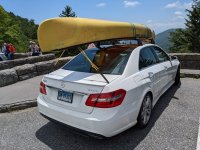- Joined
- May 25, 2022
- Messages
- 10
- Reaction score
- 2
I inflated my seahawk 2 today and put it out on a still lake. The good news is I got it inflated and I did not see any leaks. The bad news is I am finding it very difficult to move the boat on the water. It seems to take a tremendous amount of effort to go anywhere in it. Since I am new to paddling, I am not sure if it's because it's an inflatable boat, the paddles it comes with are not good, or if my expectations are unrealistic. I have paddled canoes in the past and I do not recall it taking this kind of effort to move about the water. Curious if anyone has any expereince with inflatable boats like this?

